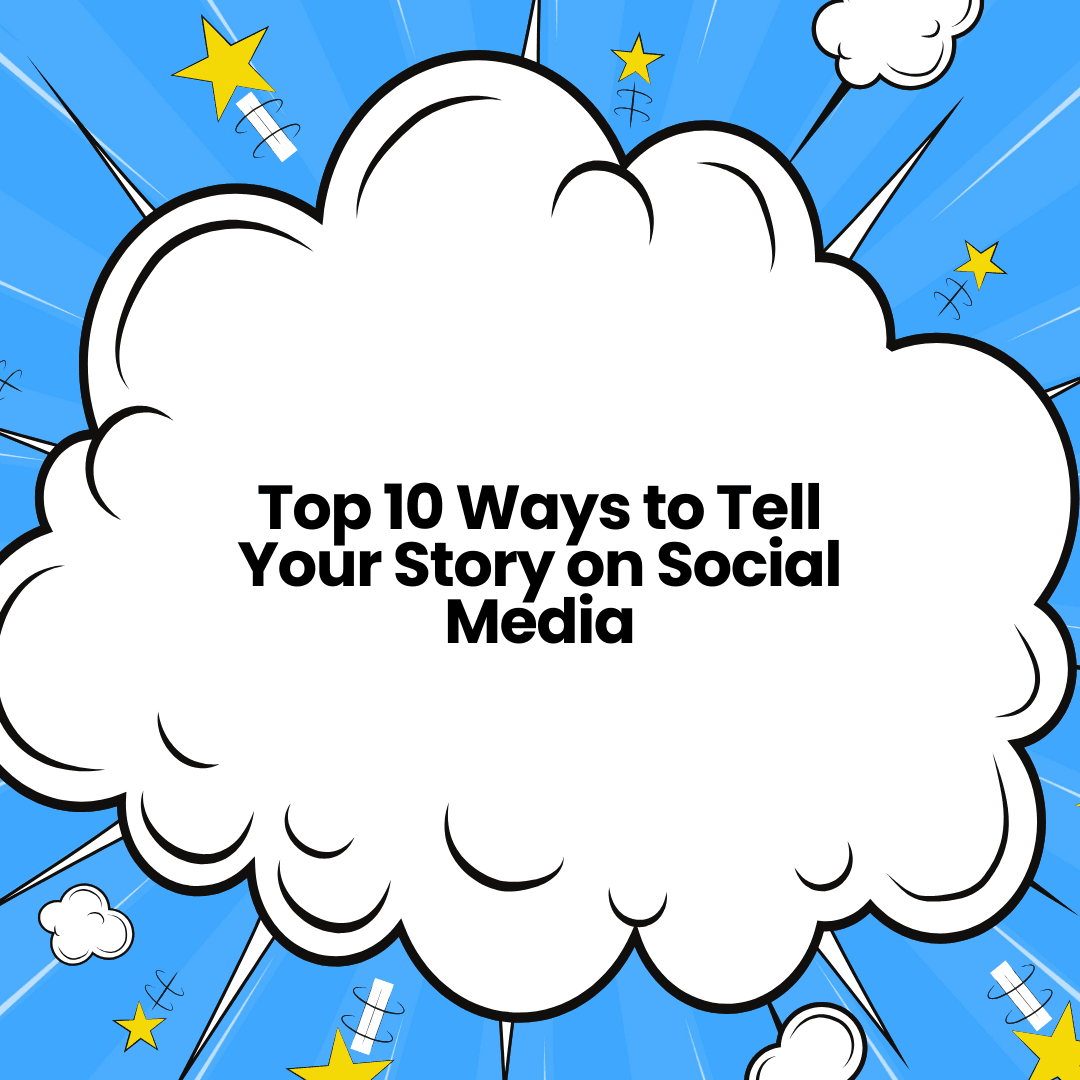In today’s digital world, storytelling is key for building a brand. Social media platforms make it easy to share stories in creative ways that capture attention, build trust, and keep people engaged. Here’s how to effectively use social media for storytelling.

1. Know Your Audience
Understanding your audience is the foundation of any good story. Take the time to learn who they are, what they like, and what challenges they face. The more you know, the better you can tailor your story. Use insights from social platforms to learn about their interests, demographics, and online behavior. Speak to them in ways they’ll understand and appreciate.
2. Use Visuals to Make an Impact
Visuals are powerful tools for storytelling on social media. Platforms like Instagram, TikTok, and Pinterest thrive on visual content. Use photos, videos, infographics, or even GIFs to create an emotional connection. Keep visuals consistent in style, tone, and color to strengthen brand identity. Quality is key; blurry or poorly lit images can ruin your story’s impact.
3. Create Short, Engaging Videos
Videos are among the most popular and effective content types. Short videos, especially on platforms like TikTok and Instagram Reels, get high engagement. Share behind-the-scenes glimpses, tutorials, customer stories, or product showcases. Make the first few seconds compelling to keep viewers watching. Adding captions can help reach a broader audience, including those who watch without sound.
4. Share User-Generated Content
User-generated content (UGC) helps make stories authentic. When followers share photos, videos, or reviews about your brand, reshare this content on your platforms. It builds trust and shows real-life examples of how people connect with your brand. Encourage followers to tag you or use specific hashtags. Recognizing your customers creates a loyal community and lets them feel valued.
5. Use Stories for Real-Time Updates
Social media stories on platforms like Instagram, Facebook, and Snapchat are perfect for sharing real-time content. Use them for daily updates, event highlights, or live product releases. Stories disappear after 24 hours, making them great for time-sensitive information. Polls, quizzes, and question boxes can make stories more interactive, engaging your audience in real-time.
6. Build a Series or Campaign
Create a storytelling series to keep followers coming back for more. For example, do a weekly behind-the-scenes segment or feature customer success stories. Campaigns around specific events or launches work well, too. Plan the series around a central theme and post consistently. This structure keeps your storytelling cohesive and makes followers anticipate your posts.
7. Use Emotional Appeal
Stories that tap into emotions often have a bigger impact. Think about how you want your audience to feel—whether it’s inspired, joyful, or curious—and craft your content to match. Share stories that show vulnerability or triumph. For instance, share challenges your brand overcame or the motivation behind your business. Authenticity helps create emotional connections with your audience.
8. Leverage Influencers and Brand Ambassadors
Collaborating with influencers can expand your storytelling reach. Influencers have established trust with their followers, and they can tell your story in a relatable way. Choose influencers who align with your brand values and audience. Brand ambassadors, on the other hand, are loyal customers who promote your brand consistently. Their testimonials and personal stories add credibility and authenticity.
9. Experiment with Different Formats
Social media offers many content formats, from carousel posts to live streams. Experiment to see what resonates best with your audience. Carousels are great for in-depth storytelling, while live streams provide an unfiltered, real-time experience. Each format has unique strengths—try different ones and track engagement to see what works best for your brand.
10. Encourage Interaction and Feedback
Good stories invite participation. Ask followers to comment, share their experiences, or answer questions. The more you engage them, the more invested they feel in your brand’s story. Respond to comments and messages to show your followers that their input matters. Engagement fosters community, loyalty, and even helps refine your storytelling based on real-time feedback.
Conclusion
Storytelling on social media goes beyond sharing information; it’s about connecting with your audience on a personal level. By using visuals, engaging videos, user-generated content, and interactive features, brands can tell compelling stories that resonate. Be consistent, stay authentic, and let your audience become part of the story. In the end, a good story is one that people remember and share. Feel free to contact us for expert guidance on using social media storytelling to elevate your brand.

